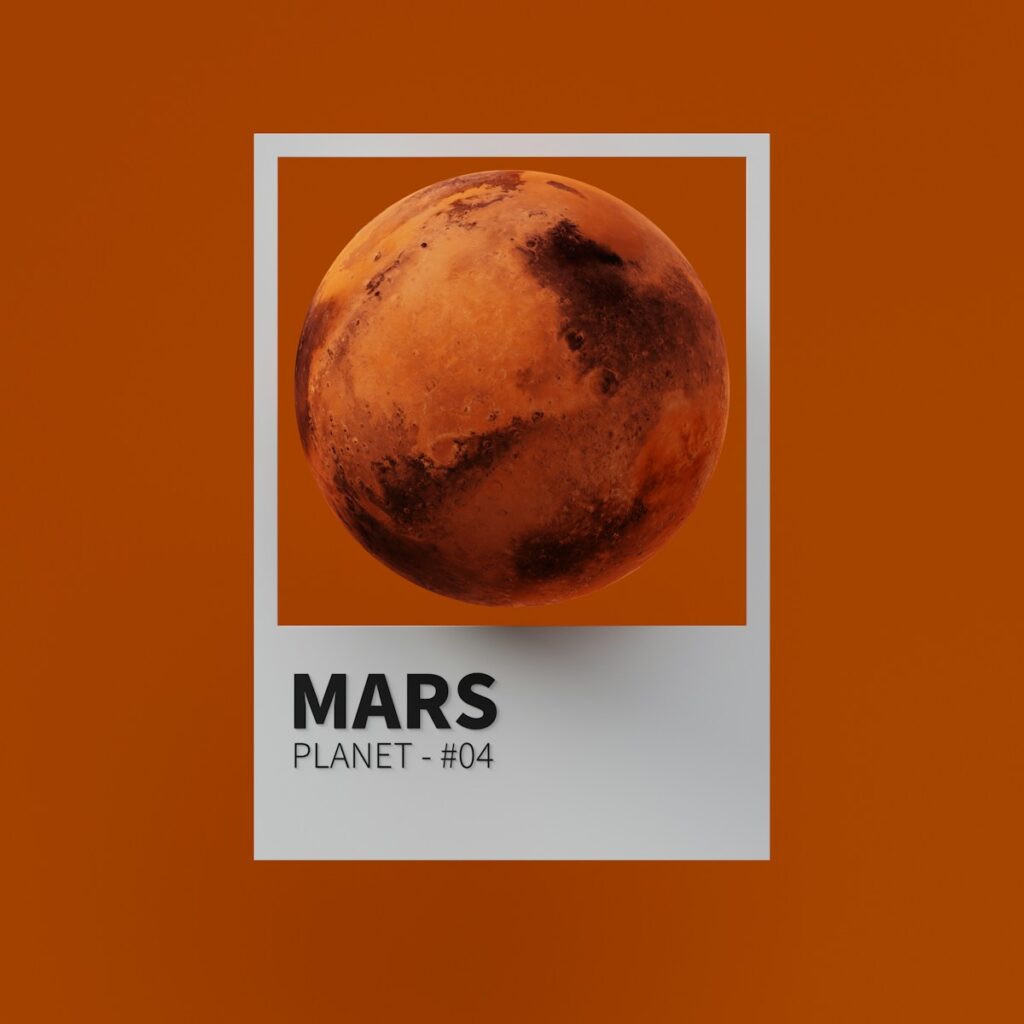
Mars, the fourth planet from the Sun, has long captivated humanity’s imagination, often referred to as the “Red Planet” due to its distinctive orange-red hue. Beyond its striking appearance, Mars stands as a desert-like rocky world, cloaked in a tenuous atmosphere primarily composed of carbon dioxide. Yet, beneath this seemingly barren exterior lies a history rich with geological dynamism and the tantalizing possibility of past, or even present, microbial life. The ongoing quest to understand Mars is not merely about planetary science; it is a profound search for our place in the cosmos, propelled by groundbreaking missions and careful analysis of the planet’s intricate story.
Our understanding of Mars has been meticulously pieced together through decades of observations, from early telescopic mappings to advanced orbital and surface missions. These endeavors have revealed a planet with a complex past, marked by colossal volcanoes, immense canyons, and compelling evidence of liquid water flowing across its surface billions of years ago. The question of whether life ever emerged on this ancient Mars, or if it might persist in hidden enclaves today, drives much of the scientific inquiry, transforming every geological feature and mineralogical trace into a clue in a cosmic detective story. This in-depth article will navigate the most critical aspects of Martian science that inform this profound investigation, drawing exclusively from the rich tapestry of existing knowledge.
This journey into Mars’s past and present conditions will illuminate the multifaceted factors that could have supported life, or that continue to challenge its existence. We will delve into the planet’s distinct geological epochs, trace the compelling evidence for its ancient hydrosphere, examine the mineralogical fingerprints left by water, explore the planet’s deep internal workings, and appreciate the protective shield of a magnetic field that once was. Each revelation brings us closer to understanding the true habitability of our planetary neighbor and the profound implications for the prevalence of life beyond Earth.

1. **Mars’s Geological Chronology: Eras of Planetary Evolution**
The geological history of Mars is meticulously divided into three primary periods, each offering crucial insights into the evolving conditions on the planet and its potential for sustaining life. These epochs—the Noachian, Hesperian, and Amazonian—represent vast stretches of time, painting a narrative of transformation from a potentially water-rich world to the arid landscape we observe today. Understanding these periods is fundamental to pinpointing when Mars might have been most hospitable to life and where to search for its ancient traces.
Beginning approximately 4.5 to 3.5 billion years ago, the Noachian period is characterized by the formation of Mars’s oldest extant surfaces, heavily scarred by numerous large impact craters. During this tumultuous time, the vast Tharsis bulge, a volcanic upland, is thought to have begun its formation, and crucially, scientists hypothesize extensive flooding by liquid water occurred late in this period. The evidence of widespread water, coupled with the planet’s formation roughly 4.5 billion years ago through the rapid accretion of material from the protoplanetary disk, suggests that the Noachian era was potentially Mars’s wettest and warmest, making it a prime candidate for the emergence of microbial life.
Following the Noachian, the Hesperian period, spanning from 3.5 to between 3.3 and 2.9 billion years ago, marked a shift in Martian geology. This era was dominated by the formation of extensive lava plains, indicating widespread volcanic activity that reshaped large portions of the planet’s surface. While liquid water was still present, as evidenced by immense outflow channels carved during this time, the Hesperian likely represented a transition towards a drier, colder Mars. This volcanic activity could have released gases into the atmosphere, influencing climate, and provided energy sources, but the overall conditions were moving away from the earlier, more clement environment.
The Amazonian period, which commenced between 3.3 and 2.9 billion years ago and continues to the present, reflects the Mars we largely know today. Regions from this period exhibit fewer meteorite impact craters, suggesting a significantly reduced rate of bombardment compared to earlier epochs. During the Amazonian, iconic features like Olympus Mons, the tallest volcano in the Solar System, continued to form through massive lava flows. Geological activity still takes place, with evidence of sheet-like lava flows as recent as 200 million years ago and water flows in grabens less than 20 million years ago, indicating equally recent volcanic intrusions. However, this period is generally characterized by a cold, dry, and thin-atmosphered Mars, making surface habitability a significant challenge.
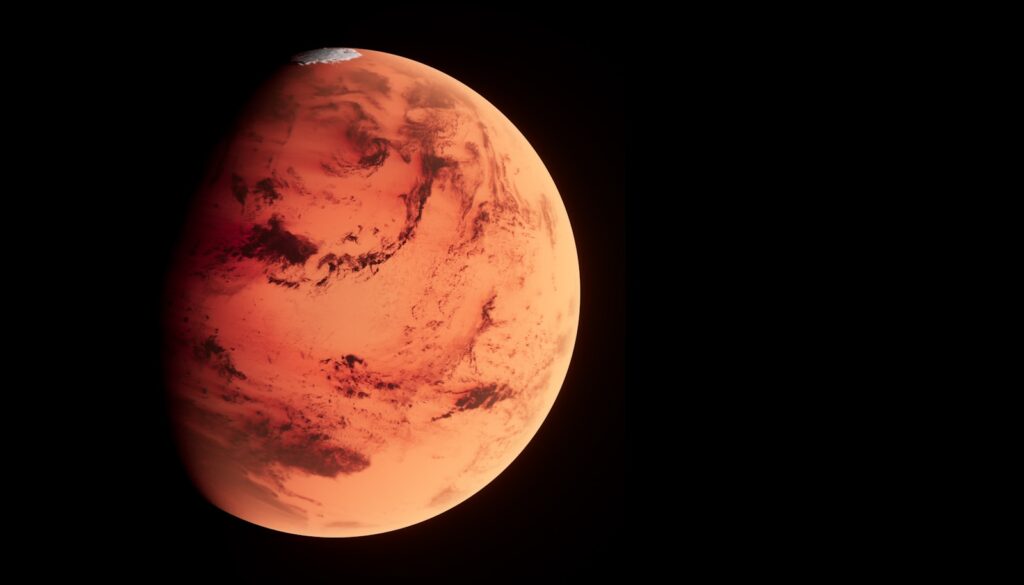
2. **The Persistent Enigma of Water on Mars: Ice, Permafrost, and Thin Clouds**
While the dream of vast Martian oceans has largely been relegated to the planet’s distant past, water in its various forms remains a crucial component of the current Martian environment. For any life, past or present, water is an absolute necessity, and its detection, even in solid or gaseous states, provides vital clues about the planet’s potential habitability. The vast majority of water on Mars today is locked away, primarily as dust-covered ice in its extensive polar regions, with the south polar ice cap alone containing enough water ice to cover most of the planet’s surface to a depth of 11 meters if melted.
The unique atmospheric conditions on Mars present a significant challenge for the persistence of liquid water on its surface. With an average atmospheric pressure of only a few thousandths of Earth’s, liquid water cannot exist stably for extended periods. It would either rapidly evaporate or freeze, depending on the temperature. Only in the lowest elevations, where pressure and temperature might briefly align, could liquid water exist for very short durations. This harsh reality means that any present-day life requiring liquid water would need to find protected subsurface environments where conditions are more stable.
Despite the formidable surface conditions, water is not entirely absent from the Martian atmosphere. Although present in thin amounts, it is sufficient to form cirrus clouds of water ice, creating ethereal wisps across the Martian sky. Furthermore, instances of snow and frost have been observed, often mixed with snow composed of carbon dioxide dry ice. These atmospheric phenomena, while not indicative of a wet world, highlight the ongoing hydrological cycle, albeit a very meager one, and confirm the continued presence of a fundamental ingredient for life, albeit in forms that challenge its direct utility for surface organisms.

3. **Echoes of a Wetter Past: Evidence of Ancient Liquid Water on the Surface**
The surface of Mars tells a compelling story of a time when liquid water was abundant, etching undeniable features into the landscape that strongly suggest its extensive presence. This geological evidence is perhaps the most powerful indicator of Mars’s past habitability, inviting us to imagine a world far different from the one we see today. The remnants of these ancient waterways are a primary target for scientists seeking fossilized evidence of microbial ecosystems.
Huge linear swathes of scoured ground, known as outflow channels, cut across approximately 25 locations on the Martian surface. These immense channels, such as Ma’adim Vallis, which stretches 700 kilometers long, 20 kilometers wide, and up to 2 kilometers deep, are significantly larger than Earth’s Grand Canyon. Scientists hypothesize that these were carved by the catastrophic release of water from subsurface aquifers early in Mars’s history, although some theories also consider glacial or lava action. The youngest of these channels are thought to have formed only a few million years ago, suggesting that significant hydrological events were not exclusive to the very earliest periods of Mars.
Beyond these massive outflow features, particularly in the oldest areas of the Martian surface, finer-scale, dendritic networks of valleys are intricately spread across significant proportions of the landscape. The morphology and distribution of these valley networks strongly imply their formation by runoff resulting from precipitation in early Mars history, much like river systems on Earth. While subsurface water flow and groundwater sapping may have played subsidiary roles in some networks, precipitation is widely considered the root cause of incision in almost all cases. This widespread evidence for ancient rainfall paints a picture of a warmer, wetter Martian past, where hydrological cycles could have supported a thriving environment.
Furthermore, along the walls of craters and canyons, thousands of features resembling terrestrial gullies have been observed. These gullies are typically found in the highlands of the Southern Hemisphere and face the Equator, poleward of 30° latitude. While their formation mechanisms are debated, with some suggesting carbon dioxide frost or dry dust movement, a number of authors propose that their creation involved liquid water, likely from melting ice. The absence of significantly degraded gullies or superimposed impact craters indicates that these are young features, possibly still active, hinting at more recent, albeit localized, water activity. Other geological features, such as deltas and alluvial fans preserved within craters, provide additional compelling evidence for warmer, wetter conditions during intervals in Mars’s early history, conditions that would necessitate the widespread presence of crater lakes, for which there is independent mineralogical, sedimentological, and geomorphological support.
Read more about: Unveiling the Red Planet: An In-Depth Exploration of Mars’s Enduring Mysteries and Dynamic Landscape
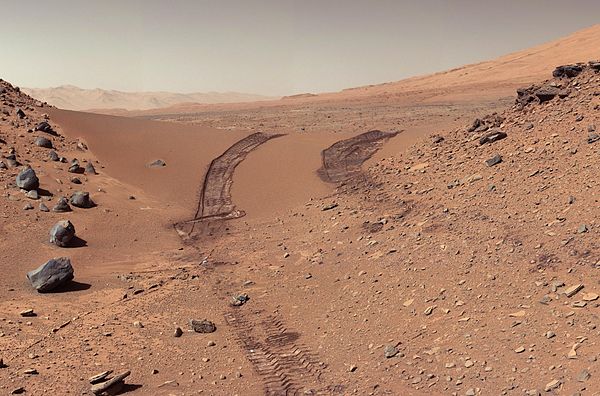
4. **Mineralogical Signatures of Hydration: Traces in Martian Rocks and Soil**
The search for past life on Mars goes beyond observing surface features; it delves into the very composition of its rocks and soil, seeking specific minerals that serve as unequivocal signatures of water’s presence. These mineralogical discoveries, often made by sophisticated rovers, provide direct evidence of hydrological processes and are critical in confirming periods of sustained water activity, a prerequisite for life.
In 2004, the Opportunity rover made a pivotal discovery: the mineral jarosite. This iron sulfate mineral forms exclusively in the presence of acidic water, confirming that liquid water once existed on Mars and was involved in altering the planet’s geology. This finding was further bolstered by the Spirit rover in 2007, which found concentrated deposits of silica, another strong indicator of past wet conditions. These early detections were crucial in shifting the scientific consensus from a cold, dry Mars to one that experienced significant periods of hydrological activity.
The evidence continued to mount. In December 2011, NASA’s Mars rover Opportunity identified the mineral gypsum on the surface, which, like jarosite, typically forms in the presence of water. More recently, in March 2013, the Curiosity rover provided compelling evidence of mineral hydration, likely hydrated calcium sulfate, in various rock samples, including fragments of “Tintina” and “Sutton Inlier” rocks, as well as in veins and nodules within other rock types like “Knorr” and “Wernicke.” The rover’s Dynamic Albedo of Neutrons (DAN) instrument also detected subsurface water, estimating as much as 4% water content down to a depth of 60 centimeters in the Yellowknife Bay area, reinforcing the notion of water lingering beneath the surface.
Further evidence comes from the detection of specific minerals like hematite and goethite, both of which sometimes form in the presence of water. These mineralogical fingerprints, scattered across the Martian landscape, collectively paint a detailed picture of a planet that once harbored liquid water, providing diverse environments where microbial life could have potentially flourished. The estimated amount of water in Mars’s upper mantle, represented by hydroxyl ions, is equal to or greater than that of Earth, suggesting a deep reservoir that could cover the entire planet to a depth of 200–1,000 meters if released, highlighting the planet’s water-rich geological heritage.
5. **Understanding Mars’s Internal Dynamics: Core, Mantle, and Crust**
Just like Earth, Mars is a differentiated planet, meaning its interior is layered, comprising a dense metallic core, overlaid by less dense rocky layers of mantle, and an outermost crust. The internal structure and its dynamic processes profoundly influence the planet’s surface conditions, including volcanic activity, tectonic features, and crucially, the generation and loss of its magnetic field—factors that are highly relevant to Mars’s past and present habitability.
The outermost layer, the crust, varies significantly in thickness across Mars, averaging about 42–56 kilometers. It reaches a minimum thickness of 6 kilometers in Isidis Planitia and a remarkable maximum of 117 kilometers in the southern Tharsis plateau. This variability, much greater than Earth’s average crustal thickness of 27.3 ± 4.8 km, hints at different geological processes. The Martian crust is rich in elements such as silicon, oxygen, iron, magnesium, aluminum, calcium, and potassium. Notably, Mars is confirmed to be seismically active, with the InSight lander detecting and recording over 450 marsquakes and related events, offering direct insights into the planet’s internal tremors.
Beneath the crust lies a silicate mantle, responsible for many of the tectonic and volcanic features observed on the surface. Seismic studies indicate that the upper Martian mantle is a low-velocity zone, becoming rigid down to about 250 kilometers, suggesting a very thick lithosphere compared to Earth. Below this, the mantle gradually becomes more ductile. Interestingly, the Martian mantle does not appear to have a thermally insulating layer analogous to Earth’s lower mantle, and below 1050 kilometers, it becomes mineralogically similar to Earth’s transition zone. Moreover, the mantle appears highly heterogeneous, with dense fragments up to 4 kilometers across, likely injected deep by colossal impacts billions of years ago, preserved due to Mars’s lack of plate tectonics and sluggish convection.
At the planet’s heart is an iron and nickel core, estimated to be around half of Mars’s radius (approximately 1650–1675 km) and at least partially molten. This core is enriched in light elements such as sulfur, oxygen, carbon, and hydrogen. Its temperature is estimated to be 2000–2400 K, significantly cooler than Earth’s core. Recent data from the InSight lander, reported in 2025, even suggest the detection of a solid inner core with a radius of 613 ± 67 kilometers. Understanding these internal dynamics is vital because the generation of a global magnetic field, a critical shield for protecting a planet from solar radiation and retaining an atmosphere, is directly linked to the convection within a molten core.

6. **The Protective Embrace of Ancient Magnetism: Mars’s Lost Shield**
One of the most significant differences between ancient Mars and modern Mars, with profound implications for its habitability, is the presence, and subsequent loss, of a global magnetic field. Earth’s robust magnetosphere acts as a protective shield, deflecting harmful solar winds and cosmic radiation, thereby safeguarding our atmosphere and surface life. The absence of such a shield on present-day Mars has played a crucial role in shaping its arid, radiation-bathed environment.
While Mars shows no evidence of a structured global magnetic field today, observations reveal that parts of the planet’s crust have been magnetized. This paleomagnetism, similar to the alternating bands found on Earth’s ocean floors, strongly suggests that alternating polarity reversals of a global dipole field occurred in Mars’s distant past. One compelling hypothesis, put forth in 1999 and further examined with data from the Mars Global Surveyor, suggests these bands indicate plate tectonic activity on Mars approximately four billion years ago, before the planetary dynamo ceased to function and the planet’s magnetic field dissipated.
The loss of this global magnetosphere, theorized to have occurred around 4 billion years ago, possibly due to numerous asteroid strikes that disrupted its core dynamics, was a catastrophic event for Martian habitability. Without this protective shield, the solar wind began to interact directly with the Martian ionosphere, stripping away atoms from the outer atmospheric layers. Both the Mars Global Surveyor and Mars Express have detected ionized atmospheric particles trailing off into space behind Mars, a process of atmospheric loss that continues to be studied by the MAVEN orbiter. This ongoing atmospheric erosion explains why Mars’s once potentially thick atmosphere thinned to its current rarefied state.
The implications of this lost magnetic field are immense. A stronger, thicker atmosphere, protected by a global magnetic field, would have allowed liquid water to persist on the surface for longer periods, providing a stable environment for life to emerge and evolve. The disappearance of this shield not only led to atmospheric stripping but also exposed the Martian surface to significantly higher levels of cosmic radiation. This transformation from a potentially clement, shielded world to one exposed to the harsh realities of space emphasizes the critical role of a planetary dynamo in maintaining the conditions necessary for surface life.”
, “_words_section1”: “1997
Having journeyed through Mars’s deep geological past, the persistent evidence of its ancient waters, its internal structure, and the profound loss of its protective magnetic field, our exploration now turns to the current dynamic forces shaping the Red Planet. We will delve into the present state of its thin atmosphere, the enduring impact of volcanism and cataclysmic impact events, and the intriguing potential of subsurface sanctuaries. Furthermore, we will analyze the vital clues hidden within Martian soil and confront the significant challenge of environmental radiation, all crucial pieces in the ongoing, audacious search for life beyond Earth. Each aspect unveils a layer of Mars’s complex reality, pointing towards potential oases for life, both ancient and perhaps even modern.
7. **Mars’s Tenuous Atmosphere: Composition, Pressure, and Loss**
The Martian atmosphere, a thin veil compared to Earth’s robust blanket, is a primary determinant of the planet’s surface conditions and its potential for habitability. Its evolution from a potentially thicker, more protective layer to its current rarefied state is a direct consequence of the loss of Mars’s global magnetosphere approximately four billion years ago. This monumental event exposed the planet’s upper atmosphere to the direct, stripping force of the solar wind, gradually eroding away its gaseous envelope into space.
Today, the atmosphere of Mars is predominantly composed of about 96% carbon dioxide, along with lesser amounts of 1.93% argon and 1.89% nitrogen, with mere traces of oxygen and water vapor. Its average surface pressure is a mere few thousandths of Earth’s, ranging from a low of 30 Pascals on the lofty Olympus Mons to just over 1,155 Pascals in the deep Hellas Planitia. This mean surface pressure, only 0.6% of Earth’s at sea level, underscores the challenges for any liquid water to persist on the surface.
Adding to its distinct character, the Martian atmosphere is notably dusty, laden with particulates around 1.5 micrometers in diameter. These suspended iron oxide particles impart a characteristic tawny, or even pink, hue to the Martian sky when viewed from the surface. While thin, it supports a meager hydrological cycle, occasionally forming cirrus clouds of water ice and depositing frost and snow, sometimes mixed with carbon dioxide dry ice.
Intriguingly, the concentration of methane in the Martian atmosphere fluctuates seasonally, from about 0.24 parts per billion during the northern winter to approximately 0.65 parts per billion in the summer. With an estimated lifetime ranging from 0.6 to 4 years, the mere presence of methane implies an active source. While non-biological processes like serpentinization involving water, carbon dioxide, and the common Martian mineral olivine are highly plausible, the possibility of biological production by Martian life remains a captivating area of scientific inquiry.
Further unique atmospheric phenomena include localized auroras, which, unlike Earth’s polar-restricted displays, can encompass the entire planet due to Mars’s lack of a global magnetic field. In 2017, a massive solar storm temporarily doubled surface radiation levels and caused an aurora 25 times brighter than any previously observed, dramatically illustrating the planet’s vulnerability to solar events and the constant interplay between the sun and Mars’s thin atmospheric shield.
Read more about: Unveiling the Red Planet: An In-Depth Exploration of Mars’s Enduring Mysteries and Dynamic Landscape
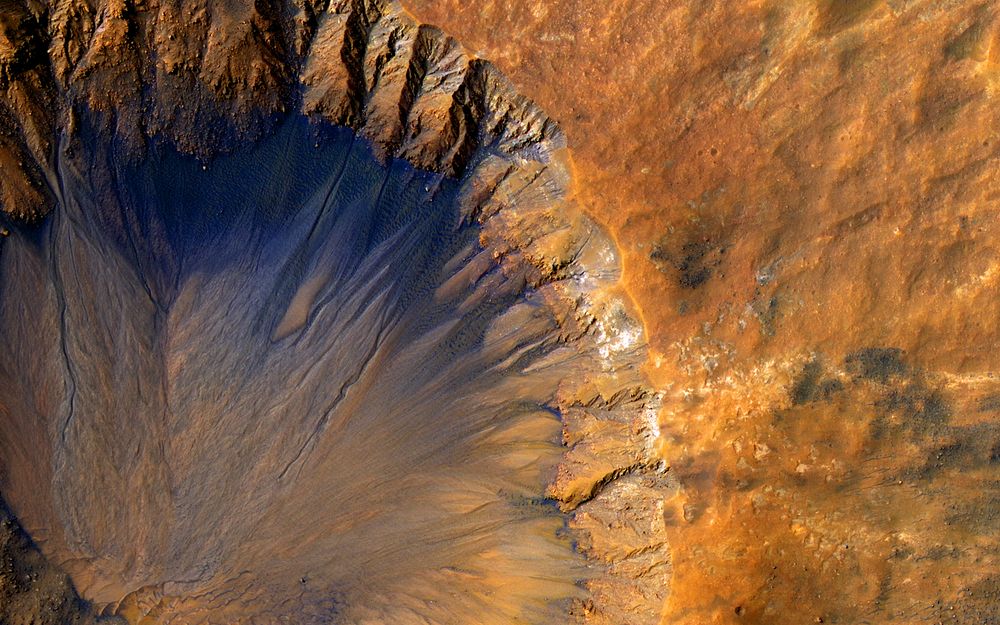
8. **Volcanic Legacy: Shaping the Martian Landscape**
Mars bears an unmistakable volcanic signature, a testament to a dynamic internal history that profoundly shaped its surface and, by extension, its past habitability. The vast upland region of Tharsis is the planet’s most prominent volcanic province, home to several colossal shield volcanoes that dwarf their terrestrial counterparts. These titanic structures, formed by immense outpourings of lava over geological eons, stand as silent sentinels to Mars’s fiery past.
Foremost among these is Olympus Mons, not only the tallest volcano on Mars but arguably the tallest mountain in the entire Solar System. Spanning over 600 kilometers wide, its local relief from base to peak exceeds 21 kilometers, more than twice the height of Earth’s Mauna Kea from its ocean floor base. Its total elevation change from the distant Amazonis Planitia plains approaches 26 kilometers, roughly three times the height of Mount Everest, highlighting the scale of Martian volcanic processes.
The Hesperian period, spanning from 3.5 to between 3.3 and 2.9 billion years ago, was particularly defined by widespread volcanic activity, resulting in the formation of extensive lava plains across the planet’s surface. These immense flows reshaped the Martian topography, burying older features and creating new canvases for subsequent geological events. Such activity would have released significant gases into the atmosphere, influencing climate, and potentially providing chemical energy sources for early life.
Even in the relatively recent past, Mars has experienced volcanic activity. Sheet-like lava flows in the Athabasca Valles are estimated to have formed only about 200 million years ago, a mere blink in geological time. Furthermore, water flows observed in the Cerberus Fossae grabens, occurring less than 20 million years ago, strongly indicate equally recent volcanic intrusions beneath the surface. These observations suggest that Mars, while not as active as Earth, still retains a lingering, albeit subdued, volcanic pulse.
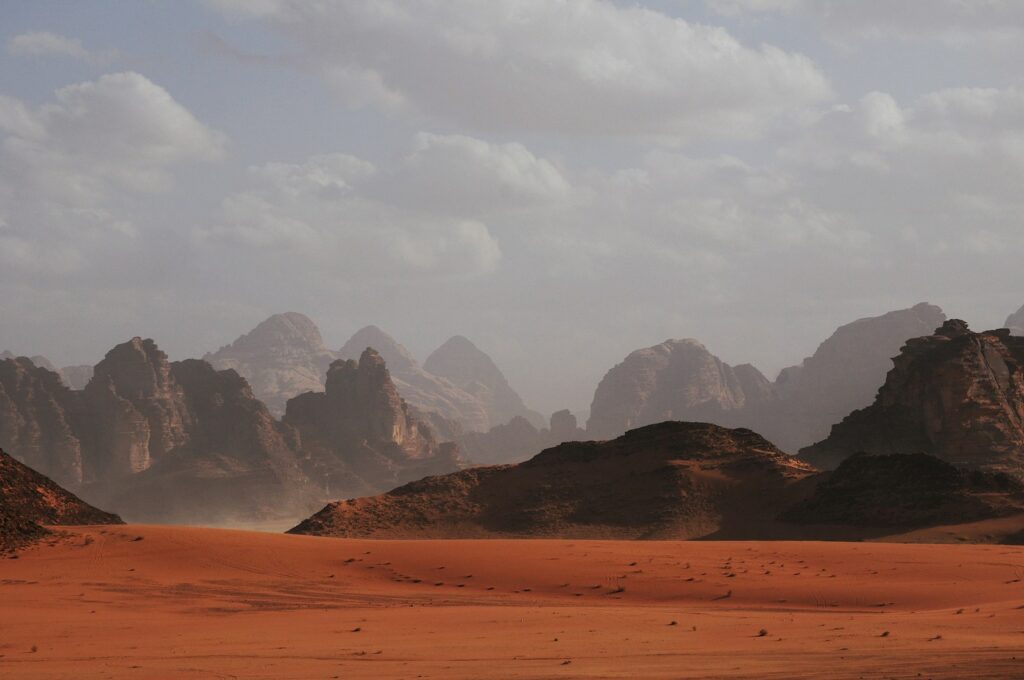
9. **Impact Scars and Planetary Dichotomy: Records of Cataclysmic Events**
The Martian surface is a colossal ledger of cosmic collisions, scarred by innumerable impact events that have left an indelible mark on its topography and geological evolution. Approximately 60% of the planet’s surface visibly records impacts from the early Solar System’s Late Heavy Bombardment era, painting a vivid picture of a turbulent past, even as modern modeling continues to refine the details of this period.
Perhaps the most dramatic evidence of such an event is the hypothesized enormous impact basin in the Northern Hemisphere, spanning an astounding 10,600 by 8,500 kilometers. This colossal feature, roughly four times the size of the Moon’s South Pole–Aitken basin, would be the largest impact basin yet discovered. It is theorized to have formed around four billion years ago when Mars was struck by a Pluto-sized body, an event believed to be the root cause of the striking Martian hemispheric dichotomy—the stark contrast between the relatively flat, low-lying northern plains and the heavily cratered southern highlands.
Beyond this immense feature, Mars is profoundly scarred by at least 43,000 impact craters with a diameter of 5 kilometers or greater. The largest exposed crater, Hellas, is a breathtaking 2,300 kilometers wide and 7,000 meters deep, a light albedo feature strikingly visible from Earth. Other notable impact structures include Argyre, approximately 1,800 kilometers in diameter, and Isidis, around 1,500 kilometers across, each a testament to the planet’s violent history.
Mars’s proximity to the asteroid belt means it has an increased chance of being struck by material originating from that region, as well as by short-period comets that lie within Jupiter’s orbit. These ongoing impacts, though less frequent than in the distant past, continue to subtly reshape the surface. Intriguingly, some Martian craters exhibit a morphology that suggests the ground became wet after the meteor impact, hinting at the subsurface presence of ice or water that was mobilized by the immense energy of the collision.

10. **Subsurface Sanctuaries: Martian Caves as Potential Havens**
In the relentless quest for extraterrestrial life, scientists are increasingly turning their gaze beneath the harsh Martian surface, where unique geological formations offer intriguing possibilities for protected habitats. The discovery of subsurface caves on Mars has sparked considerable excitement, as these hidden chambers could provide critical refuge from the planet’s inhospitable surface conditions.
Images captured by the Thermal Emission Imaging System (THEMIS) aboard NASA’s Mars Odyssey orbiter have revealed seven compelling candidates for cave entrances nestled on the flanks of the colossal volcano Arsia Mons. These intriguing features, affectionately dubbed the “seven sisters” by their discoverers, represent potential portals to an underworld that could dramatically alter our understanding of Martian habitability.
These cave entrances vary significantly in size, measuring between 100 and 252 meters wide, and are estimated to extend downwards to depths of at least 73 to 96 meters. One particular cave, named “Dena,” is exceptional as its floor is visible, allowing for a precise depth measurement of 130 meters. The fact that light does not reach the bottom of most of these caves suggests they may extend considerably deeper and widen substantially beneath the surface, forming vast subterranean networks.
The interiors of these Martian caverns represent a stark contrast to the unforgiving surface. Crucially, they offer unparalleled protection from a host of environmental threats that bombard the planet above. Micrometeoroids, lethal UV radiation, intense solar flares, and high-energy particles are all significantly attenuated or entirely blocked within these subsurface environments. This natural shielding could create far more stable and clement conditions, potentially safeguarding any microbial life that might have sought refuge there from the sun’s harsh glare and the thin atmosphere.
Read more about: Unveiling the Red Planet: An In-Depth Exploration of Mars’s Enduring Mysteries and Dynamic Landscape
11. **The Chemistry of Martian Soil: Unveiling Hidden Clues**
The regolith, or surface soil, of Mars is a treasure trove of information, its chemical composition offering profound insights into the planet’s geological history and its potential to harbor life. Primarily, the Martian surface is composed of tholeiitic basalt, a common volcanic rock, though certain regions display a higher silica content, resembling Earth’s andesitic rocks or even silica glass. These variations reflect the diverse geological processes that have shaped the planet.
Spectroscopic analyses have further revealed localized concentrations of key minerals across the Martian landscape. Regions of low albedo suggest an abundance of plagioclase feldspar, while the northern low albedo regions specifically show higher than normal concentrations of sheet silicates and high-silicon glass. In the southern highlands, detectable amounts of high-calcium pyroxenes are present, along with localized pockets of hematite and olivine—minerals often associated with aqueous alteration.
The Phoenix lander provided invaluable direct data on Martian soil composition, revealing it to be slightly alkaline with a basic pH of 7.7. Crucially, the soil contains elements vital for plant growth on Earth, such as magnesium, sodium, potassium, and chlorine. However, the lander also detected a significant presence of 0.6% perchlorate by weight, a concentration that is known to be toxic to humans, posing a considerable challenge for future human exploration and potential indigenous life.
Adding to the planet’s dynamic surface features are the enigmatic streaks that frequently appear on steep slopes of craters, troughs, and valleys. These streaks, initially dark, gradually lighten with age and can spread for hundreds of meters, often following the contours of boulders and obstacles. While commonly hypothesized to be dark underlying layers of soil revealed by avalanches of bright dust or the action of dust devils, other theories involving the subtle movement of water or even the growth of organisms have also been put forth, highlighting the ongoing scientific debate surrounding Martian processes.
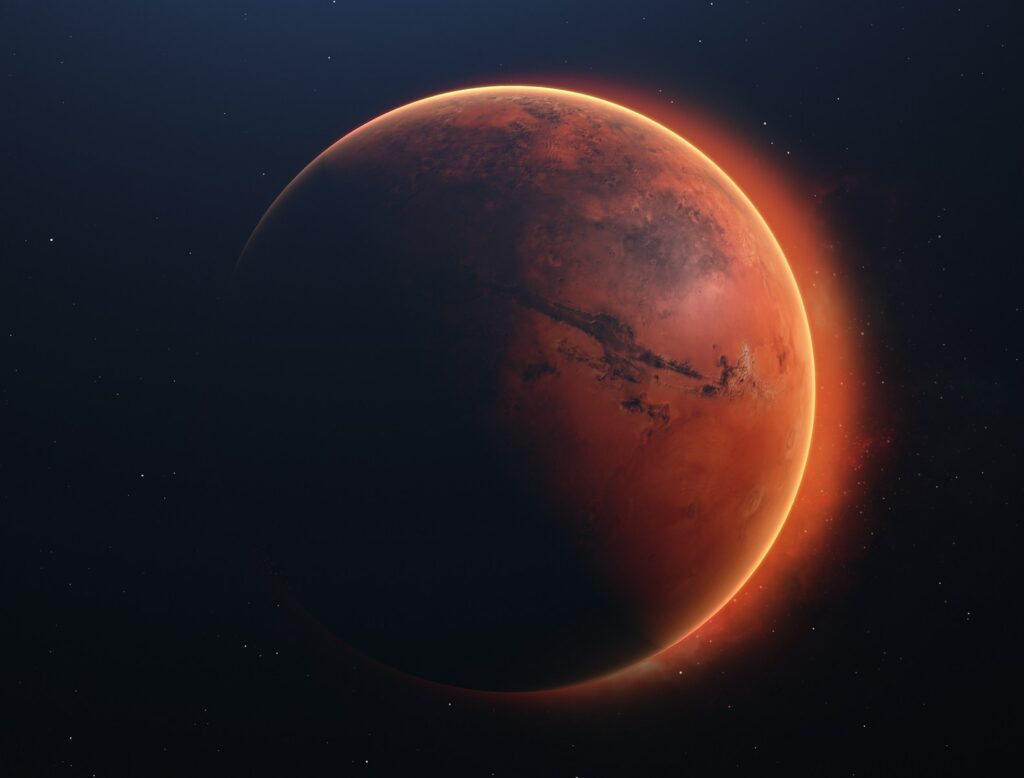
12. **Navigating the Radiation Landscape: Implications for Life’s Survival**
One of the most formidable challenges to the survival of life on Mars, particularly on its surface, is the pervasive environmental radiation. Unlike Earth, Mars lacks a robust global magnetic field and possesses a thin atmosphere, rendering its surface largely unprotected from the bombardment of harmful solar winds and cosmic rays. Understanding these radiation levels is paramount to assessing Mars’s habitability and planning for future human missions.
Measurements indicate that the average absorbed dose rate on the Martian surface is approximately 8.8 microGrays per hour, with an equivalent dose rate of 27 microSieverts per hour. To put this in perspective, these levels are significantly lower than the radiation experienced during transit to and from Mars, which can be around 1.84 milliSieverts per day. However, they remain considerably higher than radiation levels in low Earth orbit, where Earth’s space stations operate, at about 0.5 milliSieverts per day.
Intriguingly, not all regions of Mars experience the same level of radiation. Hellas Planitia, one of the largest and deepest impact basins, records the lowest surface radiation at approximately 0.342 milliSieverts per day. Even more promising are the lava tubes located southwest of Hadriacus Mons within Hellas Planitia, which show the potential for radiation levels as low as 0.064 milliSieverts per day. These subterranean refuges offer a radiation environment comparable to that experienced during flights on Earth, underscoring their potential as safe havens for life, both microbial and human.
The absence of a global magnetic field not only exposes the surface to constant radiation but also allows for unique atmospheric interactions. Auroras, for instance, are not confined to Mars’s poles as they are on Earth but can encompass the entire planet. In a dramatic demonstration of solar activity’s impact, a massive and unexpected solar storm in September 2017 caused a temporary doubling of surface radiation levels and ignited an aurora 25 times brighter than any previously observed, further highlighting the dynamic and challenging radiation environment.
The Red Planet, with its ancient scars, lingering water, volcanic grandeur, and the constant dance of its thin atmosphere and ever-present radiation, continues to reveal a story of profound transformation. Each discovery, from the whispers of past oceans to the protective embrace of subsurface caves, brings us closer to understanding the conditions that could have nurtured life, or perhaps still do, beneath its rust-colored dust. The journey into Mars’s mysteries is far from over, as every sample, every observation, and every rover’s tireless exploration contributes to humanity’s most profound quest: the search for life beyond our home planet.”

